Everyone travels to the popular destinations of the world & writes about their experiences from those places. The fun, however, lies in discovering the unknown, untouched and uncanny. One such find, in our last trip to Western Ghats, was the old & rustic Padmanabhapuram Palace. Padmanabhapuram, the former capital of the erstwhile kingdom of Travancore is situated in the Kanyakumari district of Tamil Nadu & is about 50km from Thiruvananthapuram, Kerala.
Located at the foot of Veli Hills, against the Western Ghats, the palace is spread inside an old granite fortress. The route to the palace is narrow and it’s a struggle to park even a Nano outside the palace let alone a hatchback. When you step inside, you see sand all around. Your eyes quickly scan the surroundings for the ticket counter & find it placed in a rickety corner of the building. Next to the counter, you will find a place to deposit your footwear for INR 5 per pair. In that peaceful place, the only noise that we heard was of the localites negotiating with the shoe keeper to bring down the price from INR 5 to INR 2.
It’s a good walk inside the palace. And ‘no shoes’ is a good policy to keep the premises clean and unharmed. However, you invariably step over pebbles & get your feet pinched. That only adds to the experience of a common man roaming in a palace that once belonged to a royal & rich family.
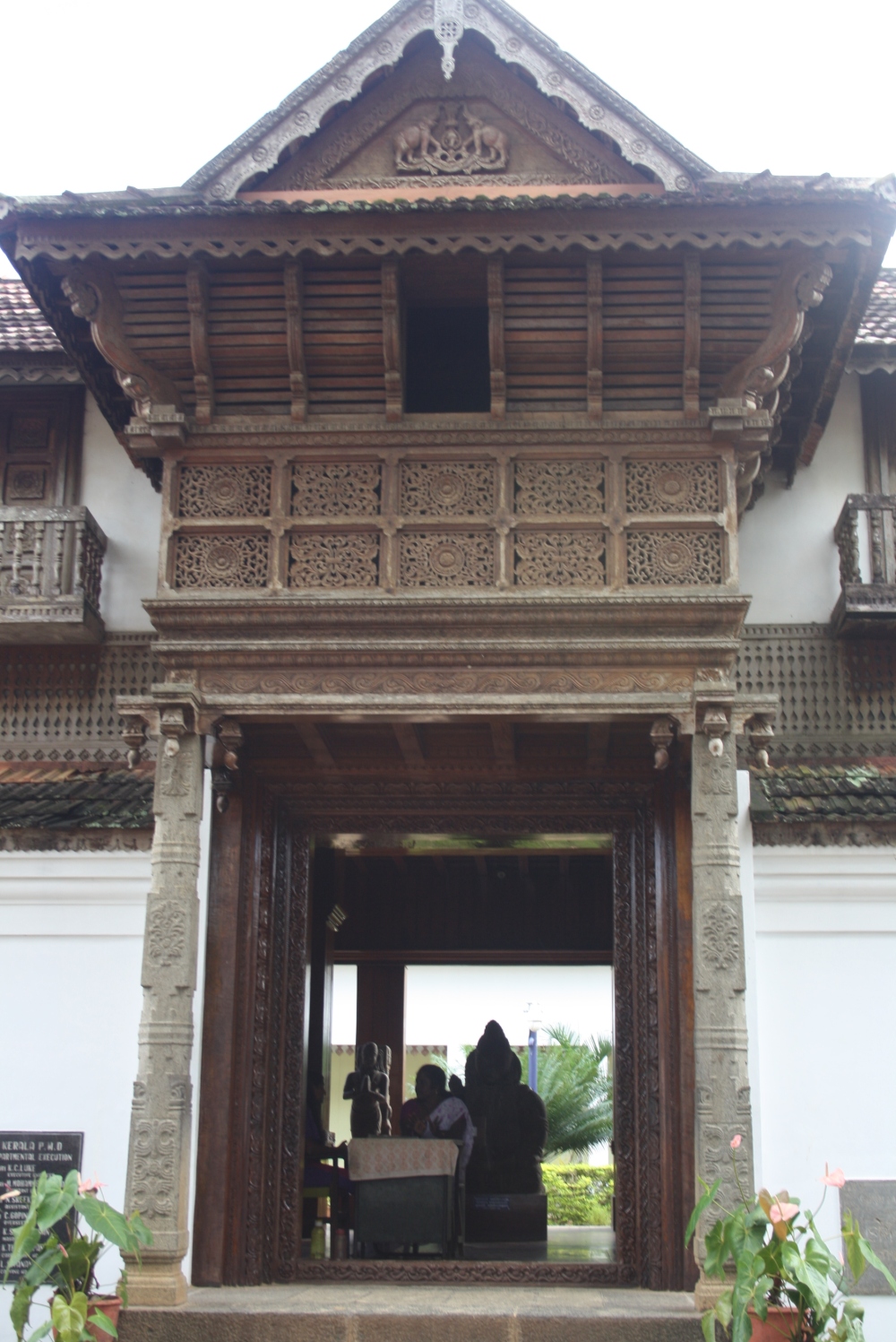
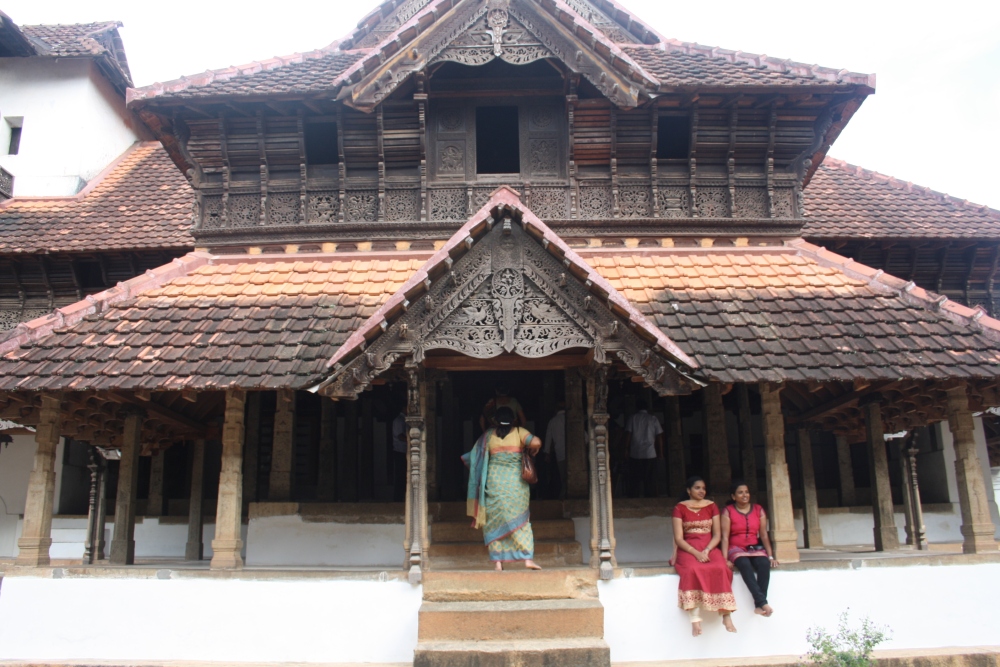
The Unknown!
It is believed that the Padmanabhapuram Palace was constructed by Iravi Varma Kulasekhara Perumal in 1601 AD. The renovation of this place only began in the year 1750 when King Anizham Thirunal Marthanda Varma ruled Travancore.
However, when the capital shifted from Padmanabhapuram to Thiruvananthapuram; the palace was deserted. The halls that were lit once were now dark. The music that was sung here once, existed only in the memories now. Everything shifted, everyone moved on. What remained was the palace & the only company it had was time & the fond memories.
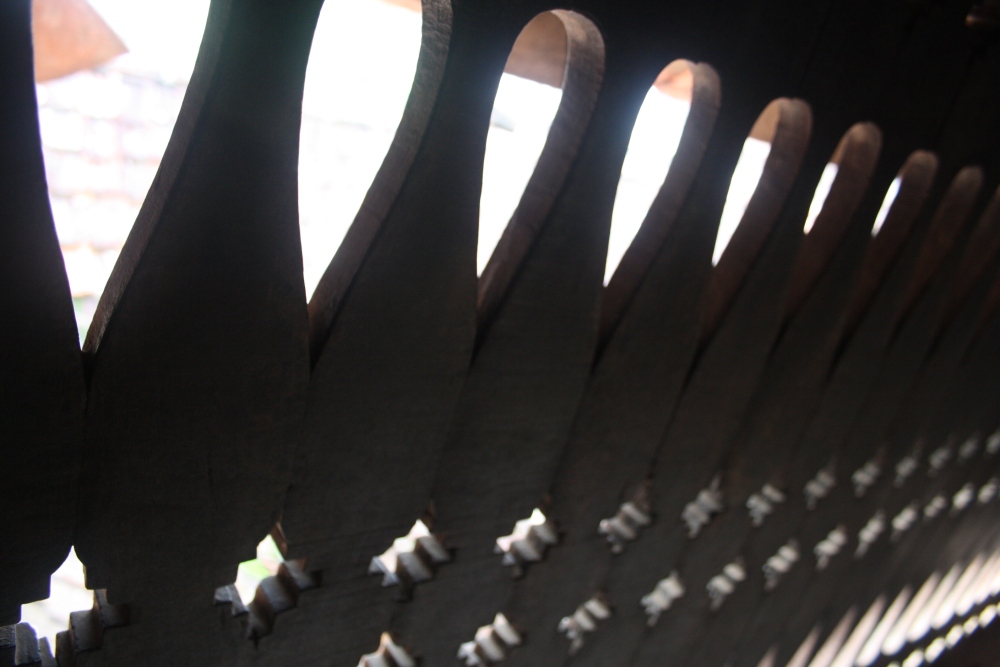


The Untouched!
We read about this place quite a lot. Many people recommended the palace for its quintessential Kerala style architecture. I harbor immense love for Victorian, wooden furniture and everything that’s even remotely related to it. So, I loved this place.
It takes a pair of eyes of an observer & a heart of a romantic to fall in love with this seemingly ordinary place. The halls are quite small, the art is old & the style is no longer practised. Even then, there are a few spots in the palace that will make you look at them twice – like the roof carved with exquisite latticework of 60+ flowers with every design utterly unique & beautiful.
The palace is divided in five, major structures:
- Mantrasala; the King’s Council Chamber
- Thai Kottaram; the Queen Mother’s Palace, constructed before 1550
- Nataksala; the Performance Hall
- A four-storeyed mansion at the centre of the complex
- Thekee Kottaram; the Southern Palace
The palace is more than 300 years old. They don’t allow you to touch any of the wooden furniture & carvings for it might not hold. They talk about the chambers and meeting halls. Wish someone could tell us what went in those chambers and meeting halls. What all conversations were held here. All that is gone now – not to be retrieved – but only to be lived in the memories of the palace.
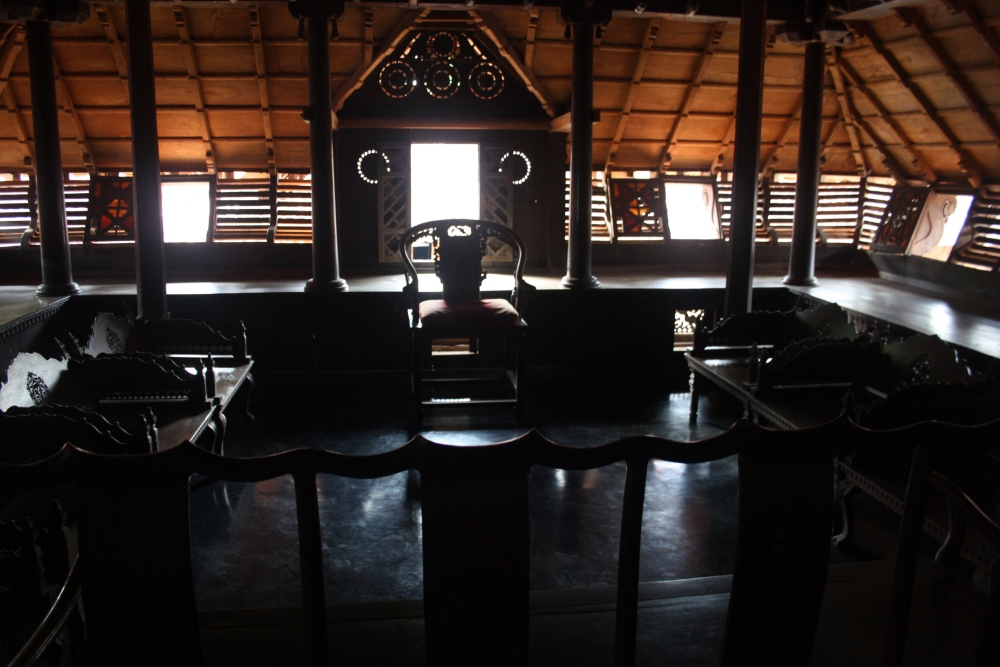

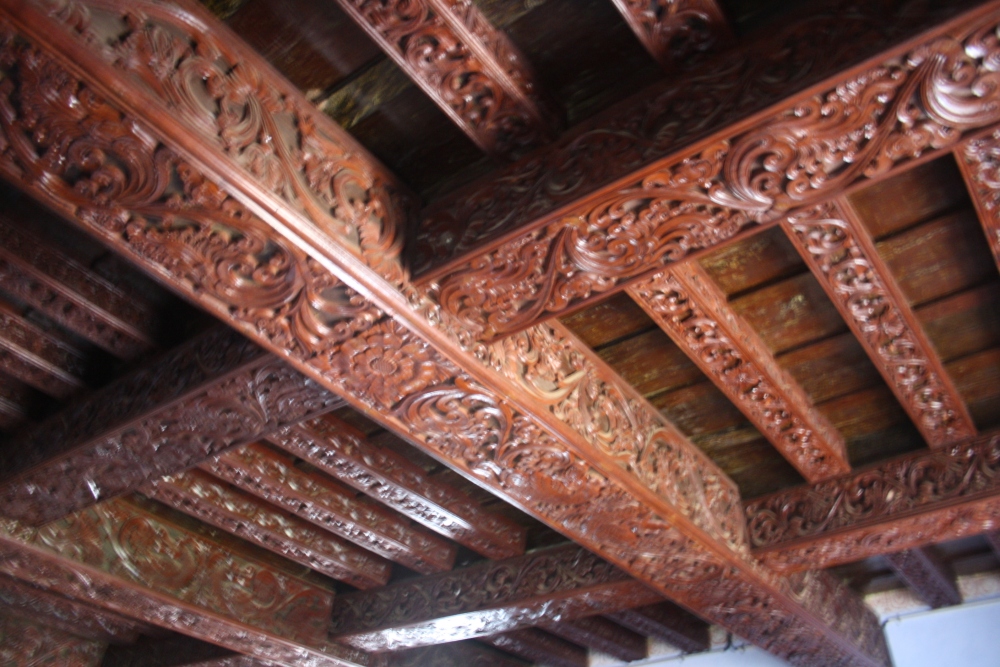

The Uncanny!
Along with the magnificent architecture, the palace employed a few uncanny methods which leave you in awe. For instance, the King’s Council chamber – the interior of which remains cool and dark. The floor is beautifully done, with a finish that throws light back. It is made from varied substances, including burnt coconut shells, egg white and so on. This particular floor finish and texture could never be recreated in any other construction. Uncanny?
The royal chairs with Chinese carvings, musical bow in mahogany, ancient rose wood & teak carved ceilings with lovely lattice work – you don’t see all of that in one place. Do you?
The walls are usually made in laterite or brick & plastered over with lime. The halls are fitted with wooden screens called jaalis, which sieve the light & air, in without letting the secrets of the inside, out. While the person inside can see through the jaali, but can’t be seen from the outside.
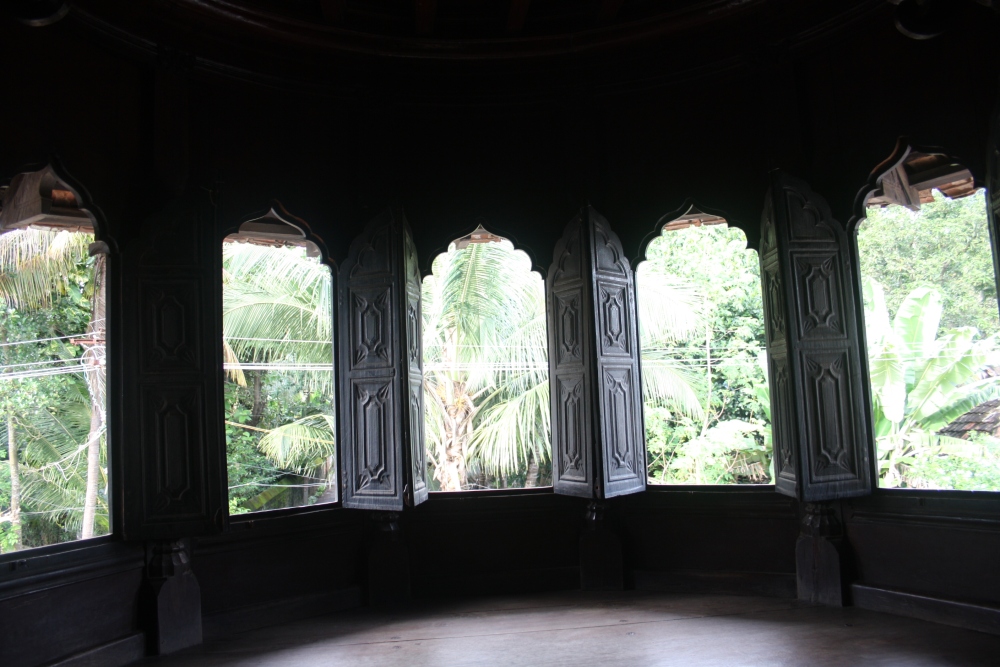

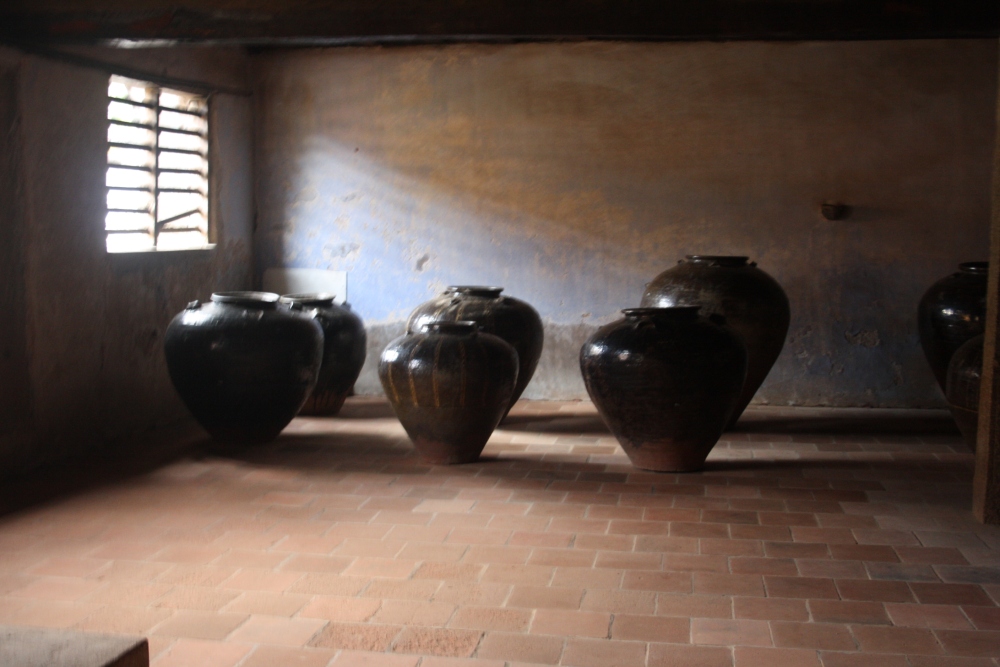


I tried to enact the postures and poses of the palace sculptures hoping to find a path to travel back in time; hoping to find pieces of history that I could put together to recreate the stories; hoping to experience how they walked and talked back then. Nothing worked.
That time is gone. Those stories are gone. What has remained – is – the palace that’s unknown, untouched and uncanny.
A very interesting post with exciting details and bful images. Truly you are an amazing blogger.
LikeLike